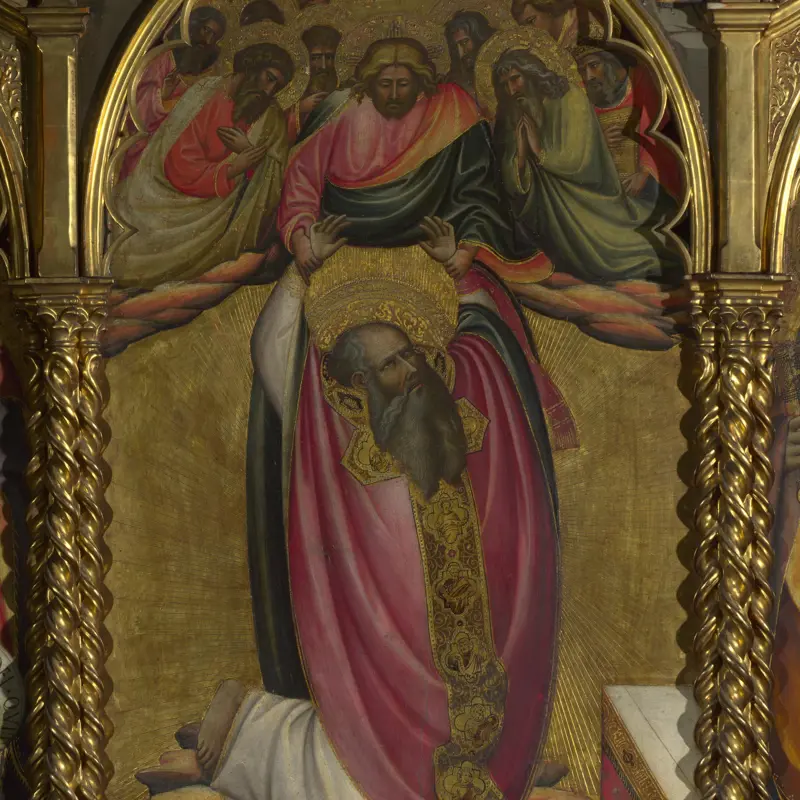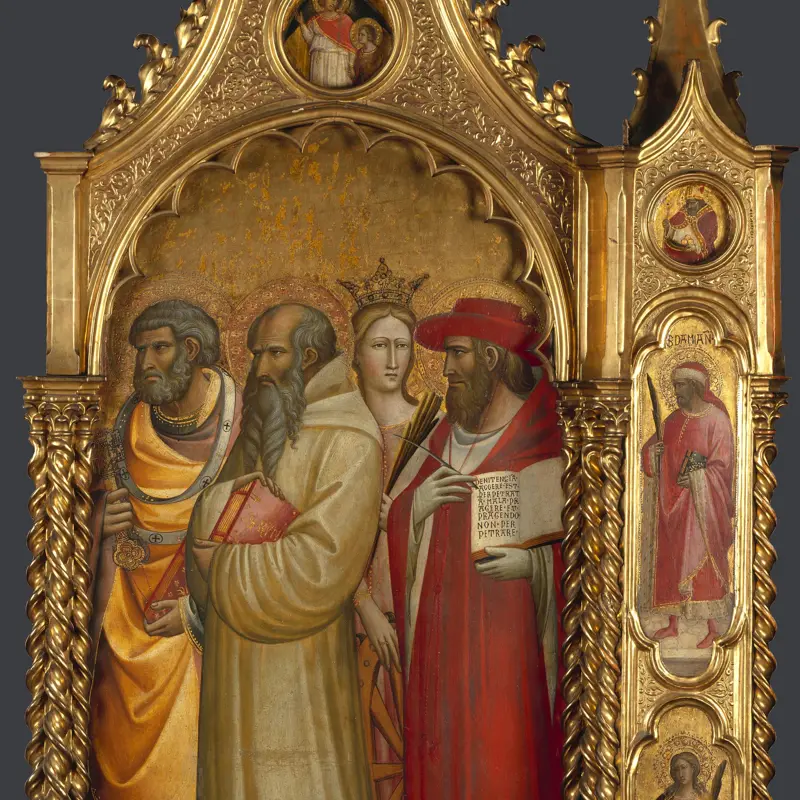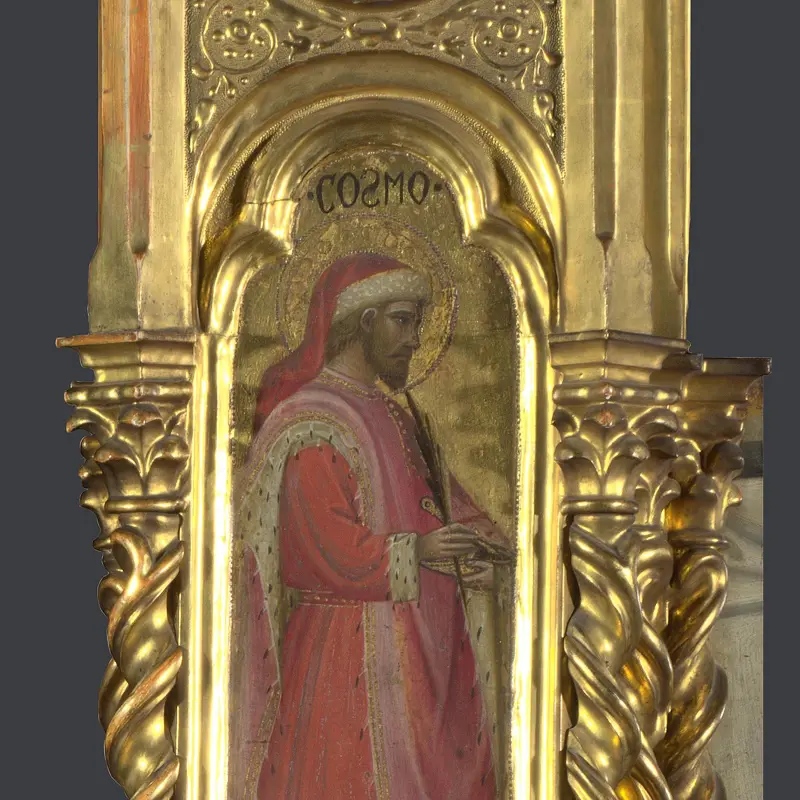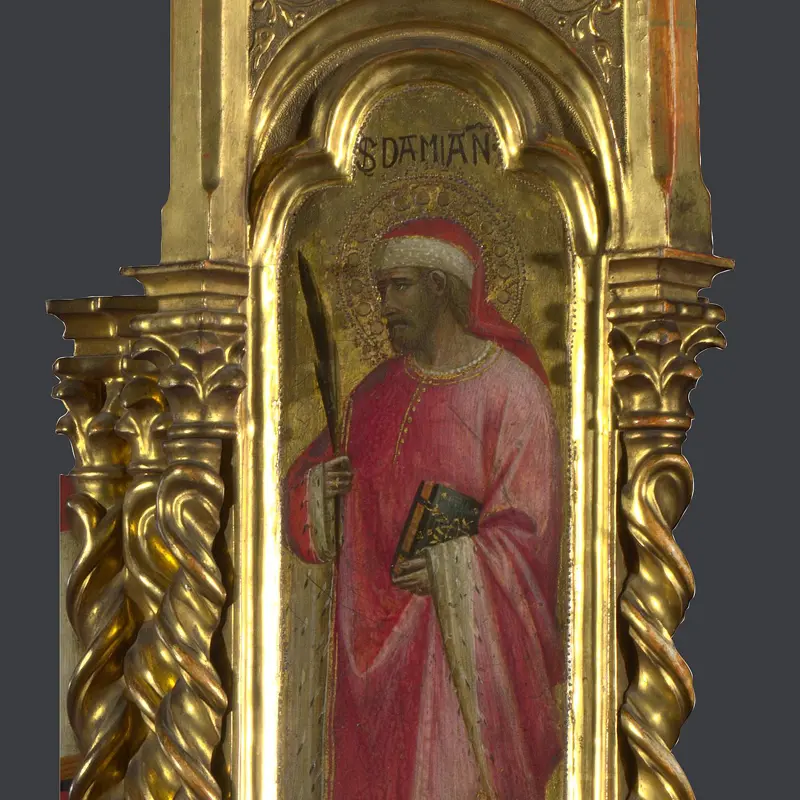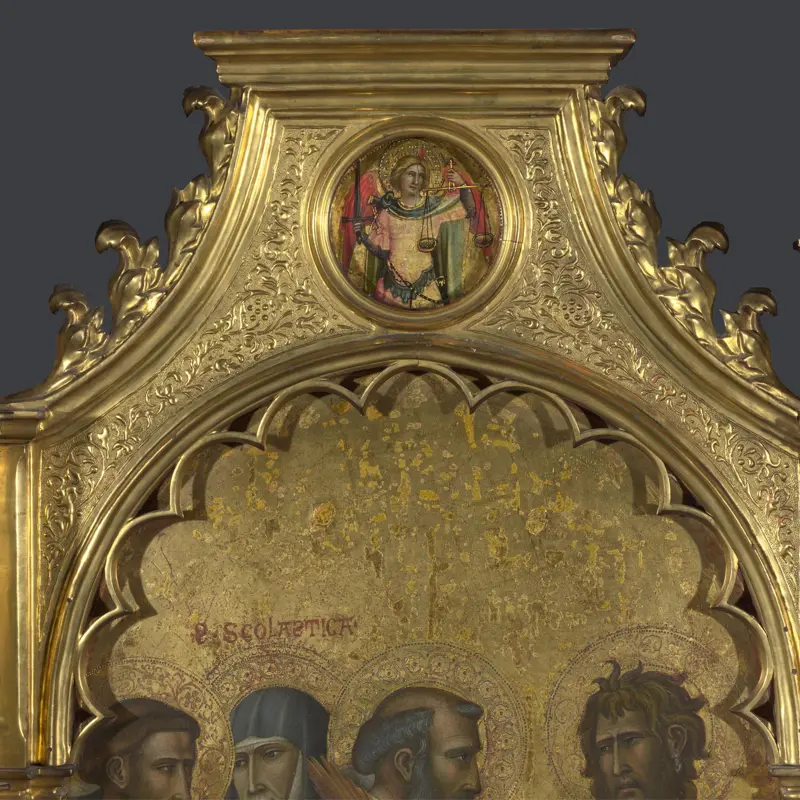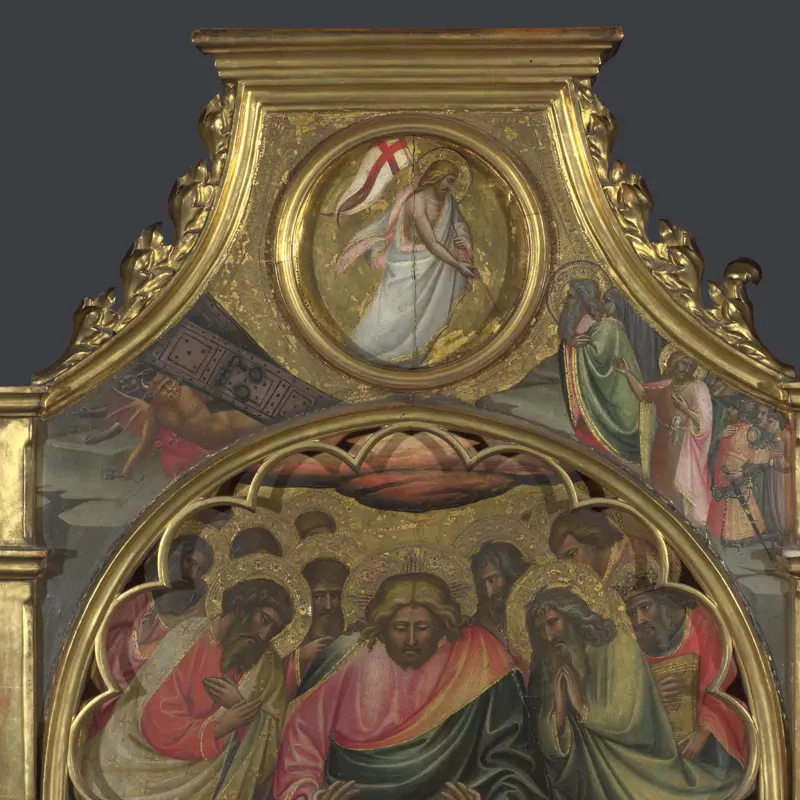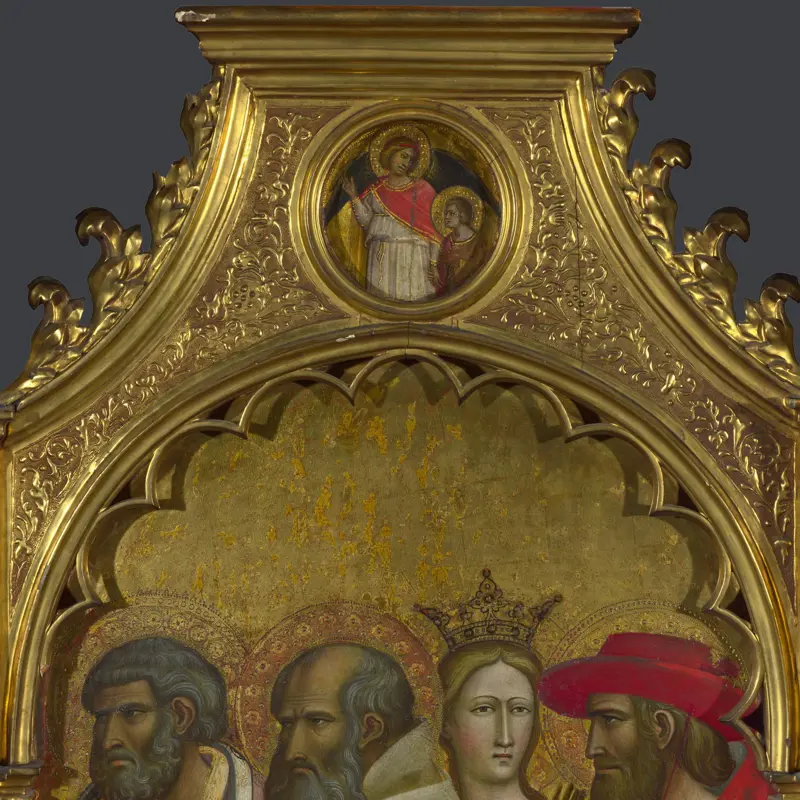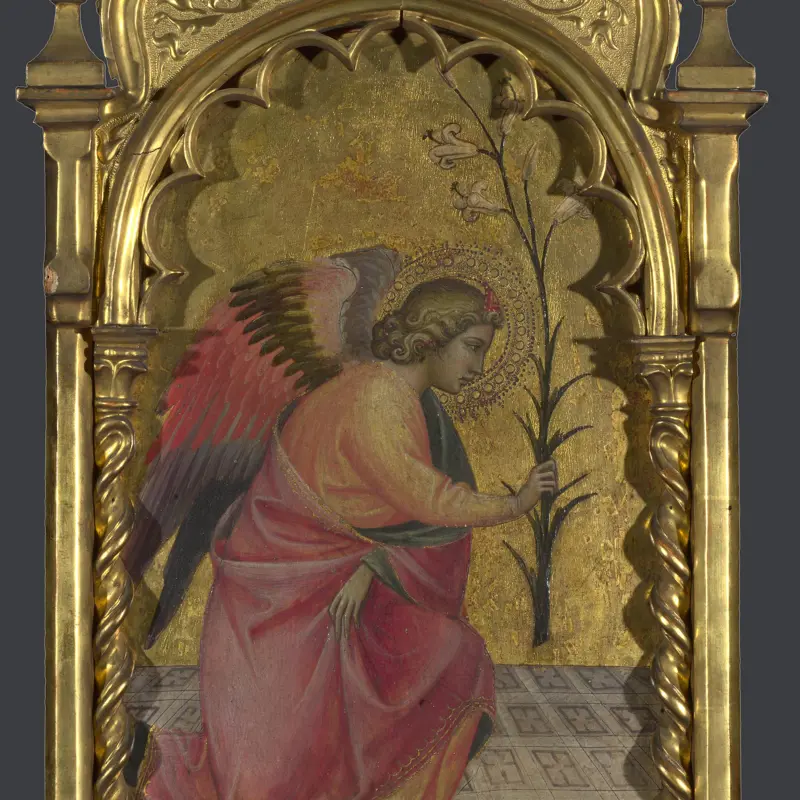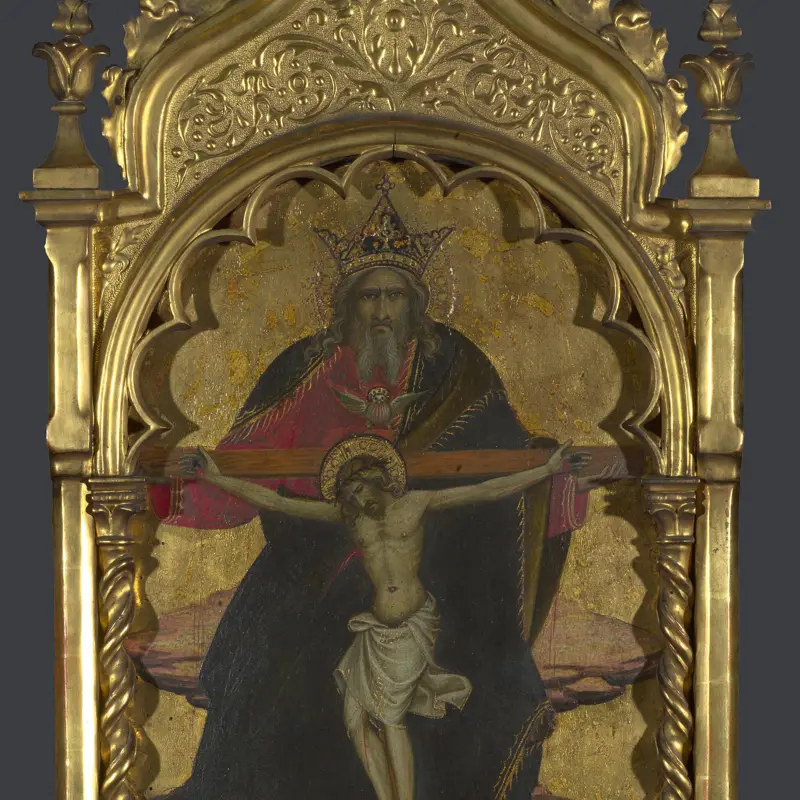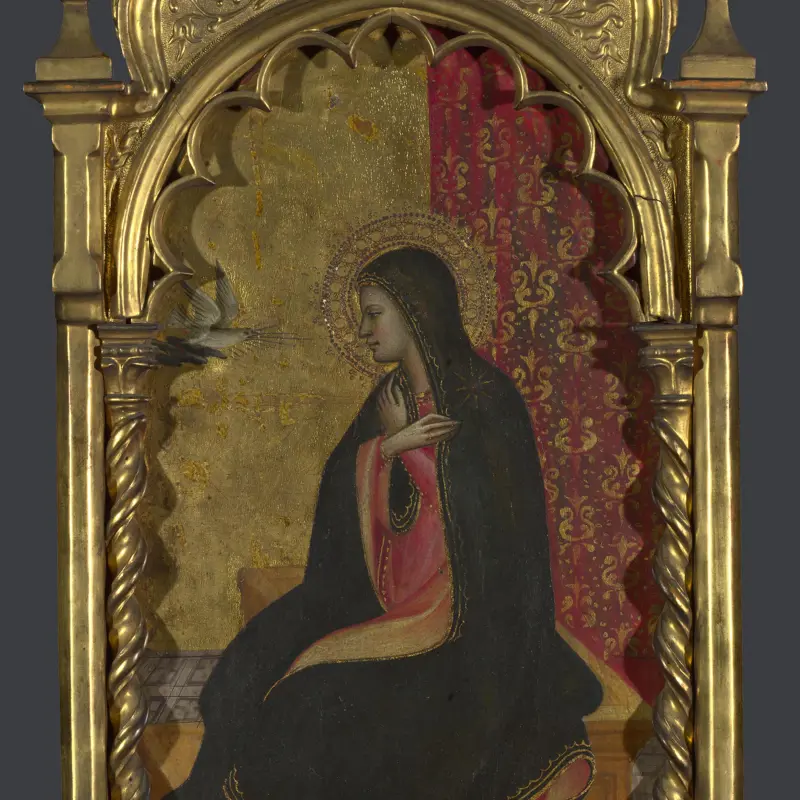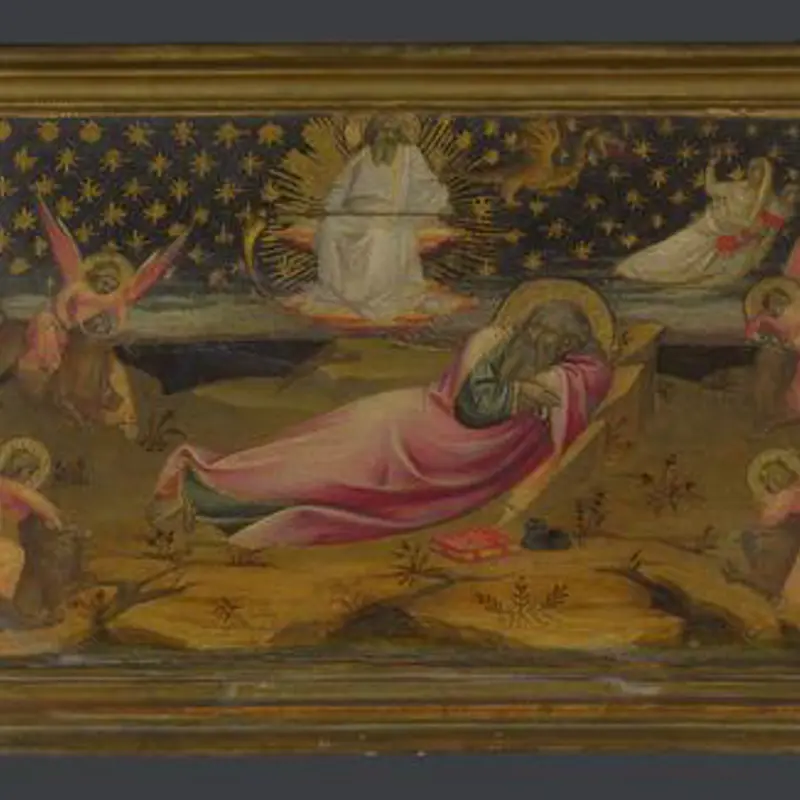Giovanni dal Ponte, 'Scenes from the Life of Saint John the Evangelist', about 1420-4?
About the work
Overview
Two female saints stand at the ends of this predella (the part of an altarpiece below the main level), one holding pincers, the other with two snakes. These are Saint Agatha, or possibly Apollonia, and Saint Verdiana. In between them are three scenes from the life of Saint John the Evangelist.
These paintings are the base of a large polyptych (a multi-panelled altarpiece) painted in the early 1420s by the Florentine artist Giovanni del Ponte. It once stood on the high altar of the church of San Giovanni Evangelista at Pratovecchio near Florence, and the saints included were special to the nuns at Pratovecchio. John was their patron saint, Verdiana was a local anchorite (religious recluse) – the nuns lived partly as hermits – and Agatha was the name of the abbess when the altarpiece was commissioned.
Key facts
Details
- Full title
- Three Scenes from the Life of Saint John the Evangelist: Predella
- Artist
- Giovanni dal Ponte
- Artist dates
- About 1385 - 1437
- Part of the group
- Ascension of John the Evangelist Altarpiece
- Date made
- About 1420-4?
- Medium and support
- Egg tempera on wood (probably poplar)
- Dimensions
- 34 × 244.2 cm
- Acquisition credit
- Bought, 1857
- Inventory number
- NG580.12
- Location
- Not on display
- Collection
- Main Collection
Provenance
Additional information
Text extracted from the ‘Provenance’ section of the catalogue entry in Dillian Gordon, ‘National Gallery Catalogues: The Fifteenth Century Italian Paintings’, vol. 1, London 2003; for further information, see the full catalogue entry.
Exhibition history
-
2011Devotion by Design: Italian Altarpieces before 1500The National Gallery (London)6 July 2011 - 2 October 2011
-
2016Giovanni dal Ponte: Protagonist of Late Gothic Florentine HumanismGalleria dell'Accademia (Florence)22 November 2016 - 12 March 2017
About this record
If you know more about this work or have spotted an error, please contact us. Please note that exhibition histories are listed from 2009 onwards. Bibliographies may not be complete; more comprehensive information is available in the National Gallery Library.
Images
About the group: Ascension of John the Evangelist Altarpiece
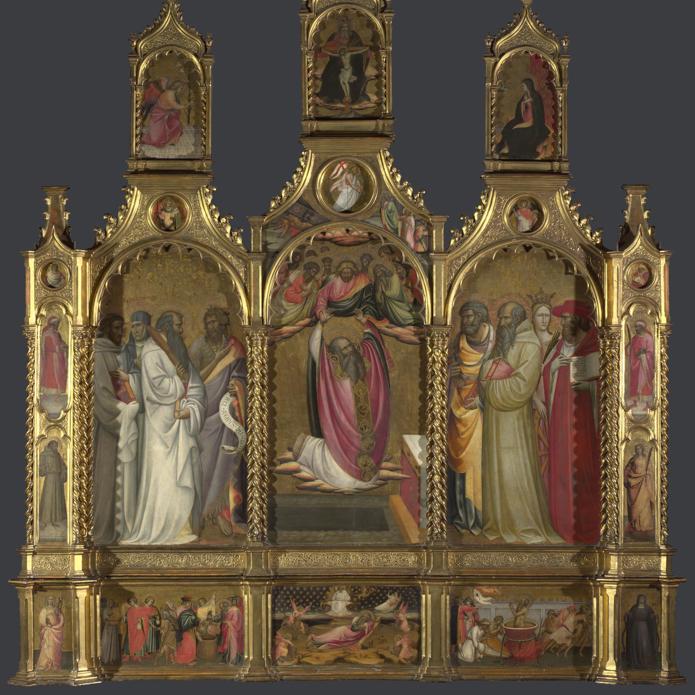
Overview
This large, gilded polyptych (multi-panelled altarpiece) is one of the few almost complete early Renaissance altarpieces in the National Gallery’s collection. It was made for the church of San Giovanni Evangelista, in Pratovecchio, Tuscany, probably in the 1420s.
Altarpieces on the high altar had to show the saint to whom the church was dedicated. Here, in the centre panel, we see Saint John the Evangelist being raised to heaven by Christ. A crowd of saints seems to watch from the large panels on either side.
The nuns at Pratovecchio were Camaldolites – a small, strict religious order found mainly in Italy – and the saints on the altarpiece would have been those who were important to them. This is one of the few surviving paintings of this date which might well have been commissioned by women – two abbesses – for the use of women.

